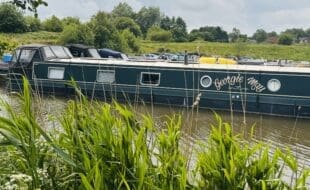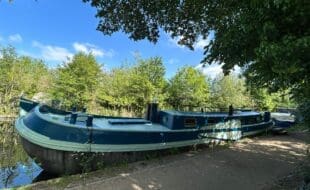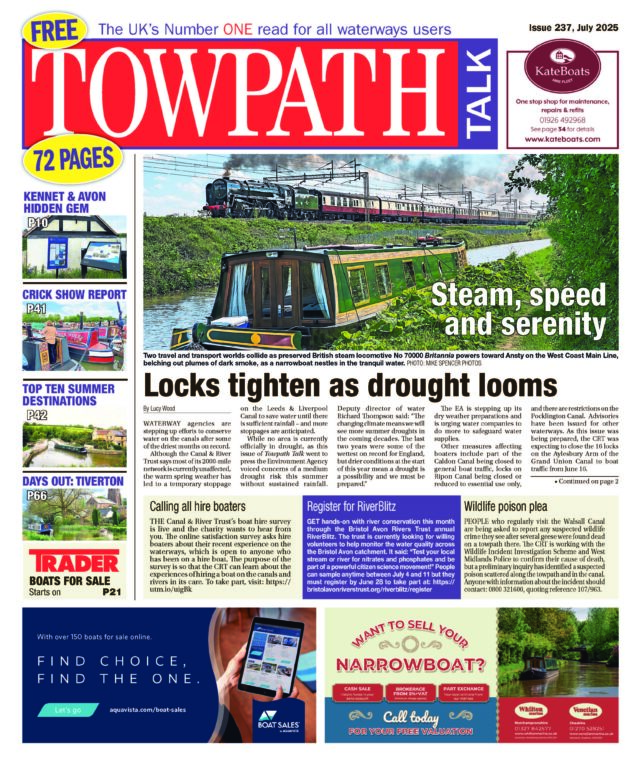In the latest in her family history series, Nicola Lisle looks at canal boat registers and how they can help your research.
SO FAR this series has explored the family history basics, such as census returns, parish registers and so on. Now it’s time to start looking at records that relate specifically to the canals.
A good starting point is the canal boat registers, which can yield all kinds of useful details about your ancestors’ boat(s), where they worked and the people who worked for them. These registers are held in local record offices, so knowing which canal your ancestors worked on will narrow your search and save a considerable amount of time.
The earliest registers date from June 15, 1795, when owners of lighters, barges, wherries or other vessels of 13 tons or more working on Britain’s inland waterways were required to register their boat with a county clerk of the peace as part of the Registry of Boats etc Act.
The owners received a certificate, for which they had to pay 2s 6d, and the clerk recorded the details in an official register. The Act expired at the end of August 1798, but some registers were continued beyond this date.
The Act was finally repealed in 1837.
The registers normally include the following details:
• Type of vessel
• Weight
• Master’s name
• Number of employees
• Capacity in which each man was employed
More detailed records are available from the 19th century onwards, when the Canal Boats Acts of 1877 and 1884 and the Public Health Act of 1934 required all working narrowboat owners to register their craft with a local authority.
The main purpose of the Canal Boat Act 1877 and its later revisions was to improve living conditions on boats. Overcrowding was a common problem and the new act attempted to address this by stipulating the number of adults and children allowed to live on board, with the numbers varying according to the size of the boat. New standards of cleanliness were also introduced.

All district councils with waterways in their area were responsible for appointing a health inspector to visit all vessels along the towpaths to ensure they were complying with the new regulations. Their findings were recorded in registers, and these can be fruitful sources of information for family historians. Details vary, but can include any of the following:
• Date of inspection
• Boat name and registration number
• Place and date of registration
• Location of boat
• Name of the owner
• Name of the master
• The number of adults and children on board
• Details of the inland waterway on which the boat will be worked
• Type of cargo
• Details of the boat, including mode of propulsion, dimensions of the boat, and number and dimensions of the cabins
• Comments on the condition of the boat
• Details of any prosecutions.
Not all registers have survived, but those that have are normally kept in the relevant local record offices or county archives, along with boat certificates and other useful documents, such as complaints books, inspectors’ journals, annual reports and correspondence.
If you struggle to find what you’re looking for in the local archives, there are some other avenues you could try.
The Waterways Archive at Gloucester Docks (www.nwm.org.uk/TheWaterwaysArchivesGloucester.html), one of the UK’s major waterways collections, has an extensive collection of health registers relating to canals in the Midlands and the North. These include boats registered to some of the leading canal companies of the 19th and 20th centuries, such as the Manchester Ship Canal Company, the Bridgewater Navigation Company and many more.
Gloucestershire Archives (www.gloucestershire.gov.uk/archives) has registers of boats and canal boat report books from 1879-1952, details of which can be found in the Shipping and Canal Boat Records guide, downloadable from www.gloucestershire.gov.uk/archives/starting-your-research/research-mini-guides/
The archive of the Canal & River Trust (https://collections.canalrivertrust.org.uk/) also has some inspection registers, boat certificates, correspondence and other papers from 1795-1966, mainly covering Oxford, Northampton and the Midlands.
Some family history societies have transcribed boat registers and inspection registers. The Family History Federation website (www.familyhistoryfederation.com) has a comprehensive list of family history societies, so it should be possible to track down one that covers your ancestors’ areas of work.
As with all records, it is important to bear in mind that information in the registers may be inaccurate. Errors sometimes occurred during the registration process, boat families often gave false information (most commonly understating the number of people living on board), or inspectors failed to keep up to date with the boat’s movements (such as when it transferred from one district to another). Nevertheless, the registers can help to confirm some of your ancestors’ dates and locations, giving further insights into their life on the canals.
#familyhistory #canalhistory #londoncanalmuseum #towpathtalk #canals #canalsandrivers #narrowboat #rivers #waterways #lifeonthecut #boating #boats





